Day 3: Between the Eleven Cities and Grutte Pier’s Sword
We started the day in Workum, where the morning sun gently bathed the town—a promising start to a long but beautiful stage of 85 kilometers. After a hearty breakfast and reviewing the route, we hopped on our bikes, ready for a day full of nature, culture, and Frisian charm.
The first kilometers took us along the watery landscape of the Alde Brekken and the Aldegeaster Brekken—a stunning area with open water, reed beds, and wide views. Here, we truly cycled right in the heart of nature: peace, space, and the constant sound of meadow birds around us. We took a moment to dismount, enjoy the view, and, of course, snap some photos.
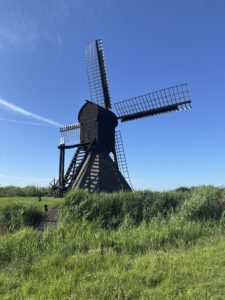
Via narrow paths, we then headed toward IJlst, known for its characteristic “overtuinen” (front gardens) along the canal. Here, we made a short stop to visit the fountain, get a stamp on our stamp card, and take pictures of the sawmill and the overtuinen, all typical of IJlst.
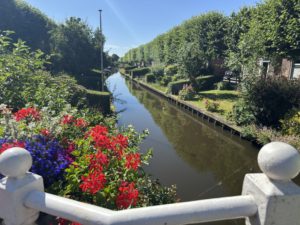
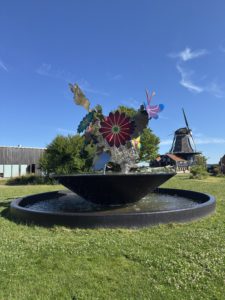
Next, we rode on to Bolsward, one of the larger Frisian Eleven Cities. At the lively market square, we enjoyed a tasty lunch while the bustle of the town center gave us new energy. The impressive Saint Francis Church and the beautiful town hall offered great photo opportunities.

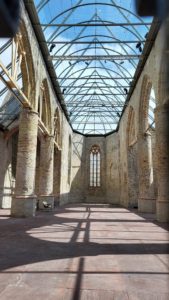
After Bolsward, we continued our route toward Harlingen but first made a stop in Kimswerd, where I shared the story of Grutte Pier, who in the early 16th century led an uprising against the Saxon and Dutch rulers.
Grutte Pier (or actually Pier Gerlofs Donia) was a respected farmer who worked his land in peace until his life took a dramatic turn. In 1515, his farm was burned down by mercenaries in service of the Saxons, killing his wife and children. From this deep personal tragedy arose a fiery quest for revenge. Pier joined the Arumer Zwarte Hoop, a rebellious group of Frisians, and began as a captain of a kind of guerrilla army to fight the enemy.
With his imposing stature (he was said to be over two meters tall) and brute strength, he grew into a fearsome figure. He was said to wield a sword over one and a half meters long with ease—an example of which can still be admired at the Fries Museum in Leeuwarden.
A well-known story tells how Grutte Pier, when capturing soldiers, forced them to say the following phrase:
“Bûter, brea en griene tsiis: wa’t dat net sizze kin, is gjin oprjochte Fries.”
(Translation: “Butter, bread, and green cheese: whoever can’t say that is not a true Frisian.”)If you couldn’t pronounce it correctly, it was often the end of the story. In this way, he used language as a test of loyalty.
Although his methods were violent, Grutte Pier is still seen by many as a symbol of Frisian pride and resistance against oppression. It was special to pause for a moment at the very place where it all began.
In Harlingen, we breathed in the salty sea air and saw the bustling harbor. Then we cycled on to Franeker, where the world-famous Eise Eisinga Planetarium and the town hall still impress, although this time we only had a quick look from the outside due to time constraints.
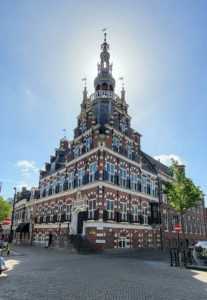
At 5:00 pm, we still had about 20 kilometers to go to Leeuwarden. Our legs were definitely feeling it by then, but together we finally reached the Frisian capital, where we were warmly welcomed at our accommodation and the well-deserved drink tasted extra good.
It was a long day, but one full of variety: water, nature, culture, and city life. Friesland once again showed its best side. On to tomorrow!
Best regards,
Sytze


